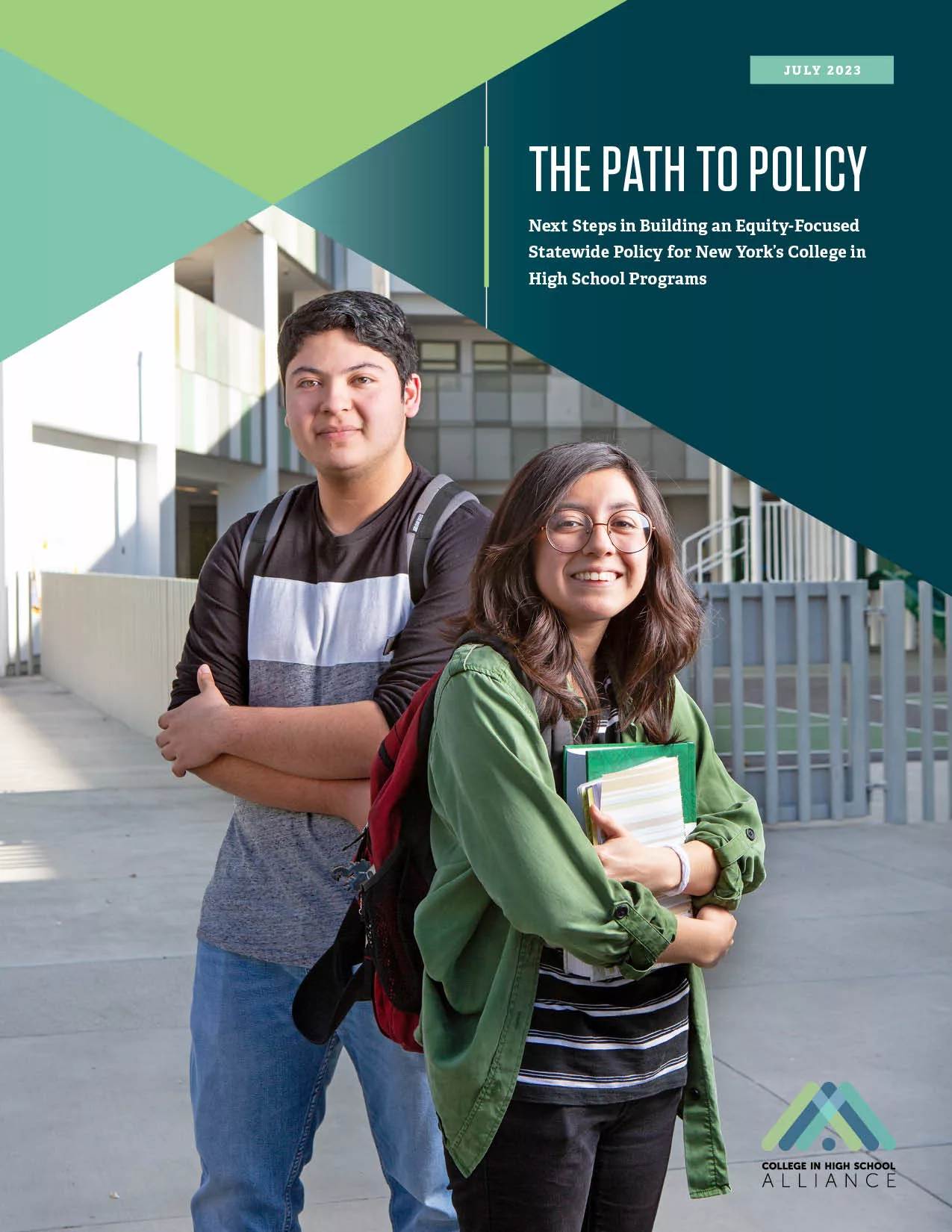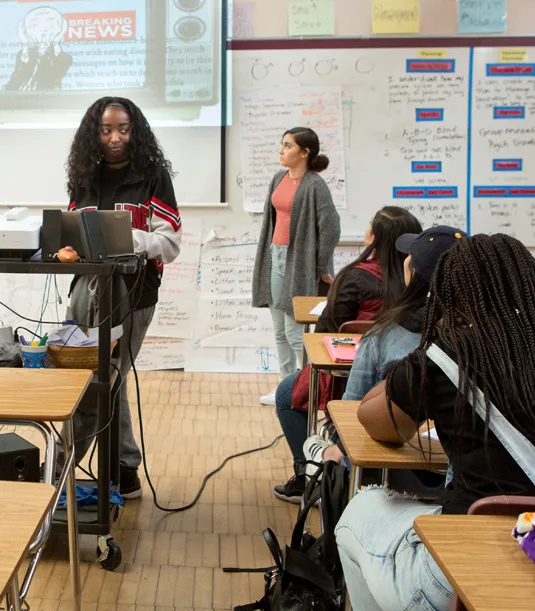The Path to Policy: Next Steps for Building an Equity-Focused Statewide Policy for New York's College in High School Programs
July 2023
Many of the innovations that have catalyzed the national college in high school movement’s focus on structured programs, equity of access, and intentional high school and college partnerships, were forged in the state of New York. The progenitor to the early college high school, the middle college, began at LaGuardia Community College in New York in the 1970s. Some of the nation’s first early college high schools, such as the Bard High School Early Colleges, opened in New York in the early 2000s. And New York is the birthplace of the Pathways in Technology Early College High School (P-TECH) movement in the late 2000s. Expansion and innovation of dual enrollment is a core part of New York’s education ecosystem.
But, as of 2023, New York is also one of only two states (including Pennsylvania) that does not have a statewide policy governing program purpose and function for its dual enrollment programs. Practitioners are beginning to ask policymakers to take action on creating statewide policy for New York’s college in high school programs that would build on the strong foundations of New York’s work to date and unlock new opportunities for students - particularly for historically marginalized learners - to participate in these opportunities.
A statewide policy for New York’s college in high school programs should be carefully developed, built on a strong vision for how to ensure equity of access and success and ensure high quality programming. It should also serve to propel the great work happening in many programs across the entire state. This is particularly true given the existing size and scale of college coursetaking in high school in the state of New York, current initiatives in New York City to support college in high school programs and pathways work generally, and the well-established existing models.
Today, New York has a unique opportunity to ground the important work happening all across the state to expand access to college courses for high school students in equity by taking two very important steps:
- Articulate a Vision for College in High School Programs in New York State - State education leaders should clearly articulate the value of college in high school programs for students and for the state of New York and explain the role that these programs should play in advancing equity in the state’s broader education ecosystem.
- Convene Stakeholders in an Inclusive Process to Design State Policy - The state needs to implement a process to reach agreement on statewide policy. The policy should be inclusive of the perspectives of the different models of college in high school program in the state, including dual enrollment, concurrent enrollment, early college high school, and P-TECH. A statewide policy should aspire to provide one state policy architecture addressing the needs of these programs, grounded in the state’s vision.
Access the paper
The Path to Policy: Next Steps for Building an Equity-Focused Statewide Policy for New York's College in High School Programs



